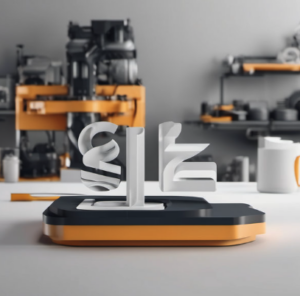How 3D Printing Accelerates Time-to-Market for Products

In the rapidly evolving world of product development, time is a critical factor that influences success. The concept of “time-to-market” refers to the time it takes from the initial idea or concept of a product to its final release to the market. In industries ranging from automotive to healthcare, reducing this timeline can make the difference between success and failure. But how can companies cut down on the time it takes to develop and launch a product? One of the most significant breakthroughs in recent years is 3D printing.
3D printing, or additive manufacturing, has revolutionized the way products are designed and produced. By enabling rapid prototyping, enhancing design flexibility, and reducing manufacturing costs, it allows businesses to develop products faster than traditional manufacturing processes. As companies race to innovate and meet customer demands more quickly, 3D printing has become a crucial tool in accelerating time-to-market. This article explores the role of 3D printing in speeding up product development, showcasing its transformative impact across industries and offering real-world examples.
What is 3D Printing?
3D printing is an innovative manufacturing process that creates three-dimensional objects by adding material layer by layer based on digital models. Unlike traditional subtractive manufacturing, where material is cut away from a solid block, 3D printing builds up the material, offering the flexibility to create complex shapes and intricate designs. This makes it ideal for producing prototypes, customized products, and small batch runs.
There are several different types of 3D printing technologies, including:
- Fused Deposition Modeling (FDM): One of the most common and affordable types of 3D printing. It uses a heated nozzle to extrude melted plastic, which solidifies as it cools, layer by layer.
- Stereolithography (SLA): This method uses ultraviolet light to cure a liquid resin, turning it into a solid object layer by layer.
- Selective Laser Sintering (SLS): SLS uses a laser to fuse powdered material (usually plastic, metal, or ceramic) into solid layers.
Materials used in 3D printing include plastics, metals, ceramics, and even biological materials for healthcare applications. These technologies allow companies to experiment with designs and produce prototypes quickly and inexpensively, speeding up product development.
The Importance of Time-to-Market
Time-to-market is a critical aspect of product development. It refers to how quickly a company can bring a product from conception to availability on the market. A faster time-to-market can provide businesses with a competitive edge, enabling them to capitalize on trends, meet consumer demands, and seize market opportunities before competitors.
Key benefits of reducing time-to-market include:
- Increased competitive advantage: Companies that can deliver products more quickly can outperform competitors who take longer to launch.
- Higher profitability: Shorter development cycles mean that businesses can generate revenue faster and recoup costs more quickly.
- Customer satisfaction: In industries where consumer preferences shift rapidly, being the first to market with a new product can lead to better customer loyalty and satisfaction.
However, reducing time-to-market is not without its challenges. Traditional manufacturing methods involve lengthy processes, such as designing molds, sourcing materials, and setting up production lines. Each stage of development can add weeks or even months to the timeline, especially for complex products. In contrast, 3D printing streamlines these processes, allowing for faster production cycles.
How 3D Printing Speeds Up the Design Process
One of the most significant ways that 3D printing accelerates time-to-market is through rapid prototyping. In traditional manufacturing, producing a prototype requires creating molds and tooling, which can take weeks or months and require significant investment. With 3D printing, prototypes can be created quickly and at a fraction of the cost, enabling companies to test ideas, make revisions, and move forward with final designs faster.
Rapid Prototyping
3D printing allows for iterative prototyping, meaning that designers can create multiple versions of a product design in a short amount of time. This capability drastically reduces the development cycle, as designers can make quick adjustments based on feedback, test the designs, and refine them without the need for extensive retooling. For example, a company designing a new consumer electronics device can quickly test different casing designs or internal components without incurring the cost of traditional molding and tooling.
Speeding Up Product Iteration
In industries like fashion, automotive, and consumer goods, product designs often need to undergo several iterations before reaching the final version. 3D printing enables designers to test prototypes in real-world scenarios, identify design flaws early in the process, and make necessary adjustments. This agility leads to faster decision-making and helps companies stay on track with their product timelines.
Reducing Tooling and Molds
In traditional manufacturing, creating custom tooling and molds for mass production can be time-consuming and expensive. With 3D printing, there is no need for these tools, as the product can be directly created from a digital model. This significantly reduces both the lead time and the costs associated with the production process.
Cost Efficiency in Production
Cost is another major factor that impacts time-to-market. Traditional manufacturing methods, such as injection molding and casting, can be costly and require significant upfront investment. Additionally, the need to produce large quantities of products to justify these costs can lead to longer timelines. With 3D printing, companies can reduce these costs significantly, especially when working on low-volume or prototype production.
Lower Manufacturing Costs
3D printing reduces the need for expensive molds and tooling, allowing businesses to save on upfront costs. The materials used in 3D printing are also more cost-effective, especially for small-scale production runs. For companies that need to produce only a few prototypes or limited batches of products, 3D printing is an ideal solution, as it eliminates the need to invest in costly production infrastructure.
Small-Batch and On-Demand Production
For many businesses, especially startups or those producing niche products, producing large quantities of goods in a single production run is not always feasible. 3D printing allows companies to produce small batches or even single units on demand, reducing the need for large inventories and minimizing waste. This approach not only speeds up production but also helps businesses remain agile and respond quickly to changes in demand.
Localized Manufacturing
Another advantage of 3D printing is the ability to localize manufacturing. With traditional manufacturing methods, products often need to be shipped to various facilities for assembly, adding to the overall production timeline. 3D printing enables businesses to produce products closer to the market, reducing transportation delays and costs. Localized production can be particularly advantageous for businesses that need to respond quickly to regional demand shifts or unforeseen supply chain disruptions.
Customization and Flexibility in Design
One of the key advantages of 3D printing is its ability to produce highly customized products without significantly increasing production costs or time. This is particularly beneficial in industries like healthcare, automotive, and consumer goods, where personalized products are in high demand.
Custom Products Without Extra Costs
3D printing allows companies to create products tailored to individual customer needs, whether it’s a custom-fit prosthetic, a personalized piece of jewelry, or a one-of-a-kind car part. Traditional manufacturing methods often require costly molds or retooling to produce customized items, but with 3D printing, customization can be achieved with no added cost or time penalty. This flexibility gives businesses a unique competitive advantage and allows them to offer products that meet specific customer preferences.
Design Adjustments on the Fly
Another benefit of 3D printing is the ability to make quick adjustments to product designs. If a customer requests a change or if feedback from early prototypes necessitates a modification, these changes can be incorporated easily into the 3D model and printed within hours. This flexibility streamlines the design process and allows companies to remain responsive to market trends and consumer demands.
Supply Chain Optimization and On-Demand Manufacturing
3D printing also plays a significant role in optimizing supply chains. Traditional supply chains often involve complex logistics, long lead times, and large inventory levels, all of which can delay the time-to-market of products. With 3D printing, businesses can manufacture products closer to the point of demand, reducing reliance on centralized factories and international shipping.
On-Demand Manufacturing
Instead of producing large quantities of products in advance and storing them in warehouses, 3D printing allows companies to produce products on-demand as they are needed. This reduces inventory costs, minimizes the need for storage space, and accelerates delivery times. For example, companies in industries like fashion or automotive can produce replacement parts or accessories as soon as customers place an order, ensuring rapid fulfillment and reducing the need for long shipping times.
Reducing Supply Chain Bottlenecks
Supply chains are often vulnerable to disruptions, whether due to natural disasters, political instability, or unforeseen manufacturing delays. 3D printing mitigates some of these risks by enabling companies to produce products locally or at decentralized locations. This reduces reliance on global supply chains and makes it easier to adapt to changes in demand or production schedules.
Real-World Examples of 3D Printing Accelerating Time-to-Market
Several companies across different industries have embraced 3D printing to accelerate their product development timelines. Here are a few examples of how 3D printing has been used to speed up time-to-market in 2024:
-
Healthcare: Medical device manufacturers have turned to 3D printing to create custom implants and prosthetics. For example, companies like Organovo use 3D printing to print human tissue, allowing for faster development of personalized medical treatments.
-
Automotive: Car manufacturers like Ford use 3D printing for rapid prototyping of parts and components, reducing the time required to design and test new car models.
-
Consumer Goods: Companies like Adidas and Nike have used 3D printing for rapid prototyping and small-batch production of shoes, enabling them to quickly test new designs and meet customer demand without long lead times.
In conclusion, 3D printing offers businesses an innovative and efficient solution to reduce time-to-market. By enabling rapid prototyping, reducing production costs, and allowing for greater customization and flexibility, 3D printing is transforming industries and helping companies stay competitive in an ever-changing marketplace. As the technology continues to evolve, it is likely that the role of 3D printing in accelerating product development will only become more significant. Businesses that harness the power of 3D printing today will be better positioned to meet customer demands, innovate faster, and bring products to market with speed and precision.




